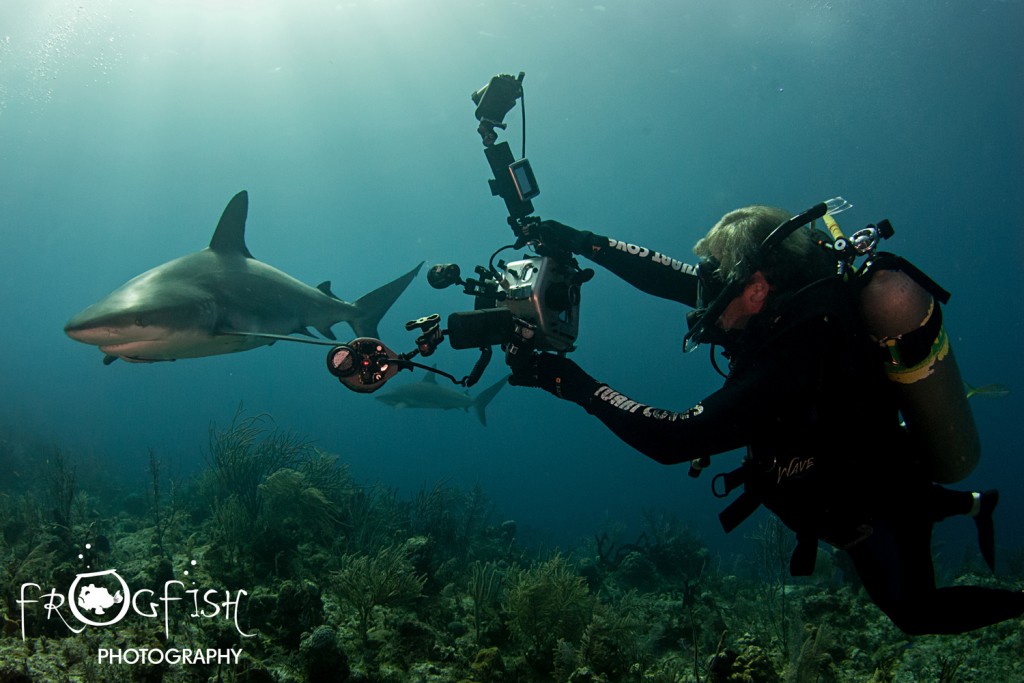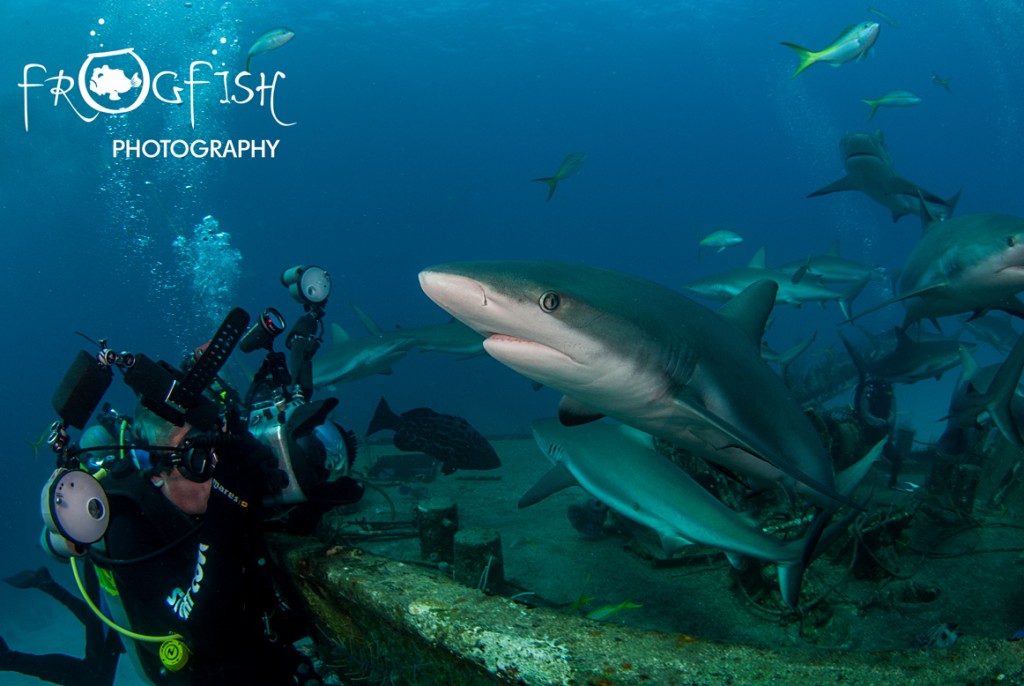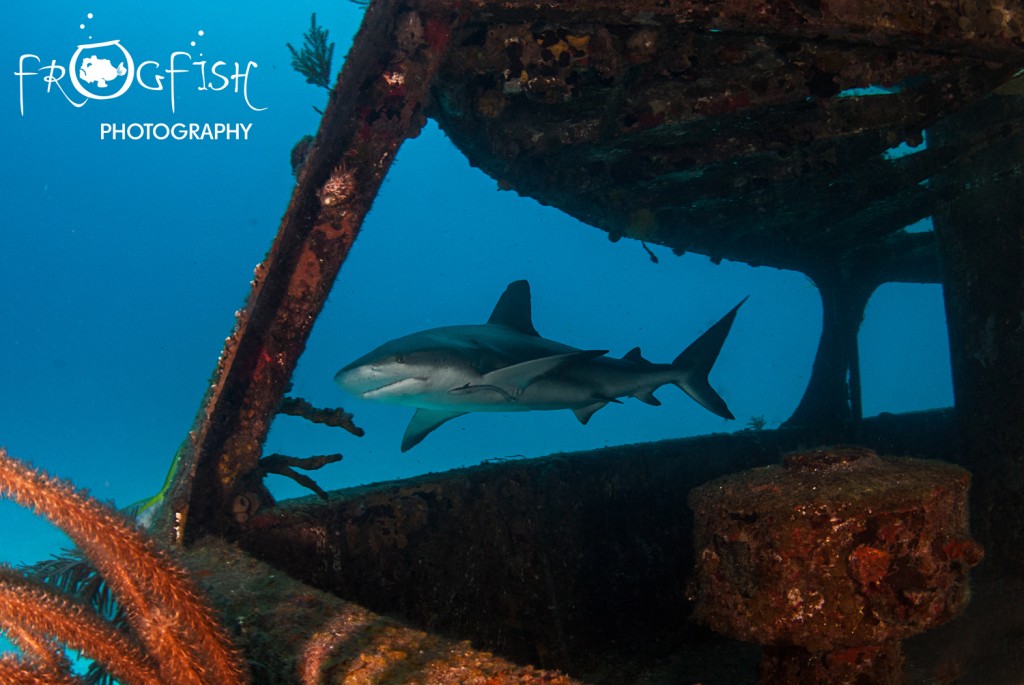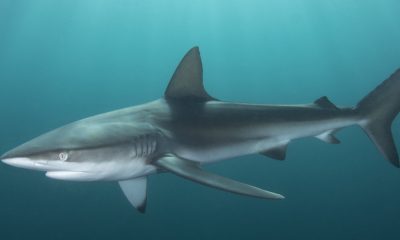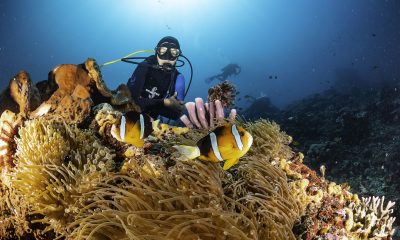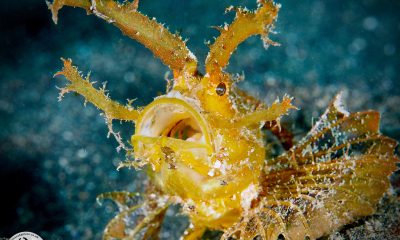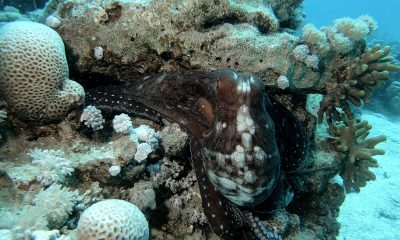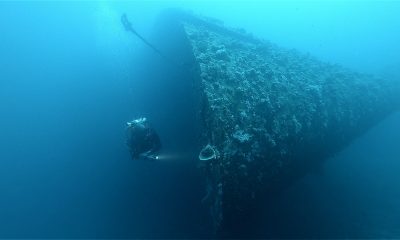Photo / Video News & Reviews
Photographing Caribbean Reef Sharks in Nassau, New Providence, Bahamas

 On our second piece about photographing sharks in the Bahamas, we head to New Providence Island, to dive out of Nassau with Stuart Cove. This dive centre is probably the most famous in the Bahamas, and perhaps even the whole Caribbean. Stuart originally opened the centre in 1978 and it has grown into a really impressive operation. Whilst it is a large dive centre, with lots going on, it does not feel like it when you arrive. The staff are all friendly and professional and so you feel comfortable and at home right away. We were greeted by Stuart himself, before grabbing our gear and jumping onto a boat to go and dive with Caribbean Reef Sharks.
On our second piece about photographing sharks in the Bahamas, we head to New Providence Island, to dive out of Nassau with Stuart Cove. This dive centre is probably the most famous in the Bahamas, and perhaps even the whole Caribbean. Stuart originally opened the centre in 1978 and it has grown into a really impressive operation. Whilst it is a large dive centre, with lots going on, it does not feel like it when you arrive. The staff are all friendly and professional and so you feel comfortable and at home right away. We were greeted by Stuart himself, before grabbing our gear and jumping onto a boat to go and dive with Caribbean Reef Sharks.
There are a number of different types of shark diving here. You can photograph them on the reef, cruising over colourful corals in shallow water. You can photograph them on and around wrecks, which have been sunk deliberately to create new habitats for the marine life and a playground for divers and underwater photographers alike. You can also dive with a shark wrangler on a shark feeding dive, who will feed small pieces of fish to the sharks via a long metal stick. We tried all three and each offers different photographic opportunities.
The reef dive is great for those who want to try this for the first time, and want a more chilled out experience. A metal box with a few fish heads inside is placed on the seabed, away from any delicate coral. The sharks are attracted in by the smell and will cruise around the area. You can then find the most photogenic area, where you want to photograph a shark, and wait. We had around 10 sharks on this dive for a full 80 minutes. We photographed divers with each other alongside the sharks, the sharks out in the blue, as the reef dropped away from the shallows, and also by some beautiful sea fans to show them in their natural environment.
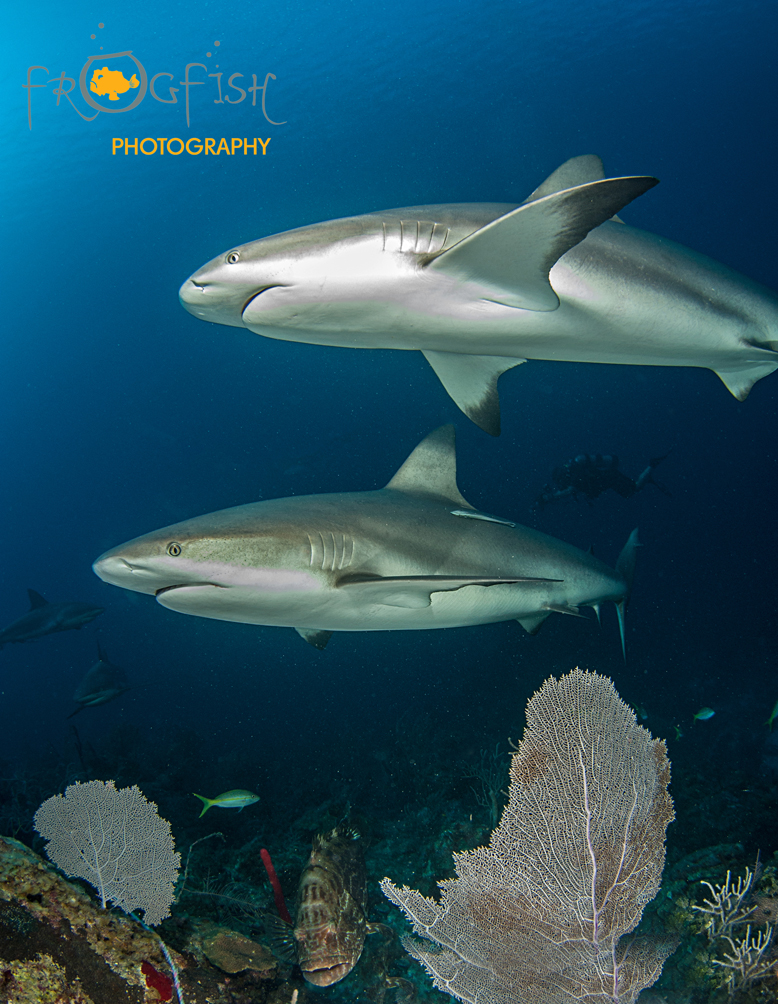 However, our favourite dive was the wreck dive. Once again, a bait box was taken down by the guide, but this time it was hidden deep inside a small wreck called Big Crab. Again the sharks were attracted in by the smell, and this resulted in a dozen or so reef sharks circling the artificial reef. It made for some wonderful photography. The wreck is in shallow water (less then 10m I think) and the water was warm, blue and clear. We could have stayed there all day! You could shoot from inside the wheelhouse of the wreck looking out through the windows and catching a shark as it cruised past, or you could shoot from outside the wreck to catch the full dramatic effect.
However, our favourite dive was the wreck dive. Once again, a bait box was taken down by the guide, but this time it was hidden deep inside a small wreck called Big Crab. Again the sharks were attracted in by the smell, and this resulted in a dozen or so reef sharks circling the artificial reef. It made for some wonderful photography. The wreck is in shallow water (less then 10m I think) and the water was warm, blue and clear. We could have stayed there all day! You could shoot from inside the wheelhouse of the wreck looking out through the windows and catching a shark as it cruised past, or you could shoot from outside the wreck to catch the full dramatic effect.
Our final dive was the shark feeding dive. This is an adrenalin rush of a dive, as the sharks are moving more quickly and come very close as they position themselves in the hope of getting a fishy snack from the feeder. The “wrangler” will wear chainmail for this dive for protection from accidental nips from overexcited sharks. A piece of fish is taken out of the bait box, one at a time, on the end of a metal stick, and raised up into the water column for a shark to grab. Whilst I preferred the wreck dive, this is a fantastic dive to get great shots with sharks and divers together in the water.
All too soon, it was time for us to move on to the next island for some more shark diving. Next time we visit Grand Bahama to look for tiger sharks and to spend a hard-earned day off playing with stingrays.
Further Information
For more from Nick and Caroline, visit www.frogfishphotography.com.
Blogs
Diver Discovering Whale Skeletons Beneath Ice Judged World’s Best Underwater Photograph
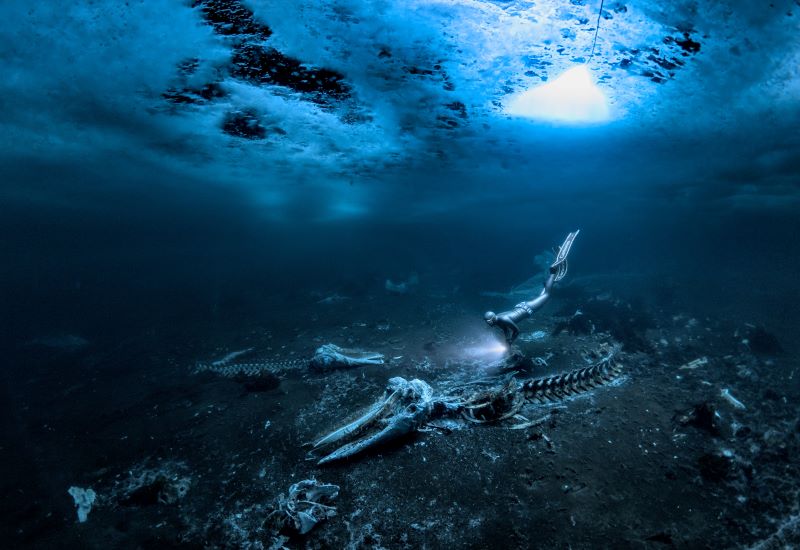
An emotive photograph showing a freediver examining the aftermath of whaling sees
Alex Dawson from Sweden named Underwater Photographer of the Year 2024. Dawson’s
photograph ‘Whale Bones’ triumphed over 6500 underwater pictures entered by underwater
photographers from around the world.
“Whale Bones was photographed in the toughest conditions,” explains chair of judging
panel Alex Mustard, “as a breath-hold diver descends below the Greenland ice sheet to bear
witness to the carcasses. The composition invites us to consider our impact on the great
creatures of this planet. Since the rise of humans, wild animals have declined by 85%. Today,
just 4% of mammals are wildlife, the remaining 96% are humans and our livestock. Our way
needs to change to find a balance with nature.”
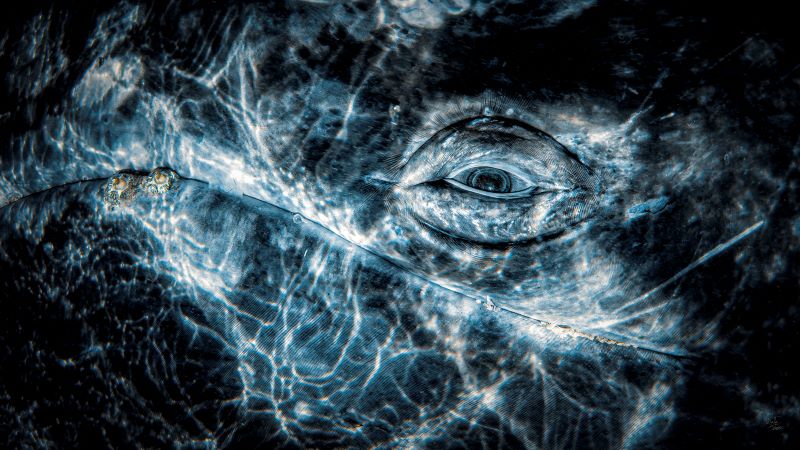
Photo: Rafael
Fernandez Caballero
Whales dominated the winning pictures this year with Spanish photographer Rafael
Fernandez Caballero winning two categories with his revealing photos of these ocean giants:
a close up of a grey whale’s eye and an action shot of a Bryde’s whale engulfing an entire bait
ball, both taken in Magdalena Bay, Baja California, Mexico. Fernandez Caballero took ‘Grey
Whale Connection’ while drifting in a small boat, holding his camera over the side in the water
to photograph the curious whale. ‘The End Of A Baitball’ required Fernandez Caballero to dive
down and be in exactly the right place at the moment the whale lunged. “The photo shows
the high speed attack,” he said, “with the whale engulfing hundreds of kilograms of sardines
in one bite — simply unforgettable to see predation on such a scale.”
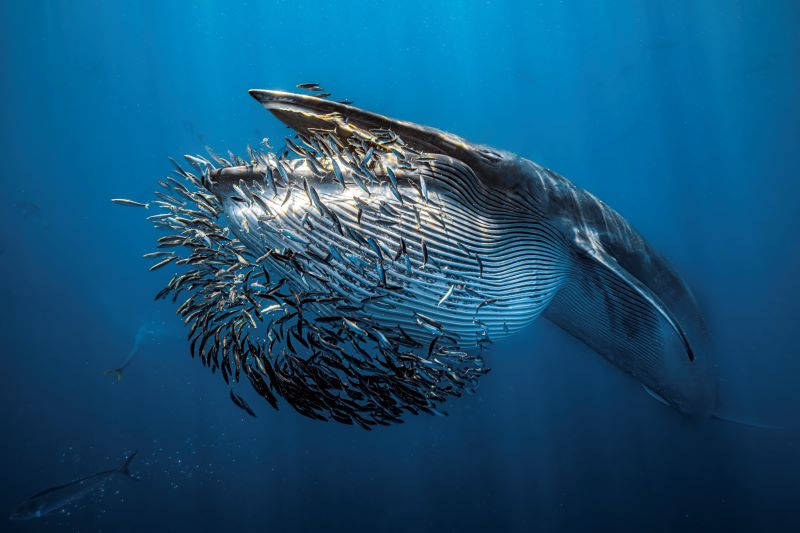
Photo: Rafael
Fernandez Caballero
Lisa Stengel from the United States was named Up & Coming Underwater Photographer of the Year 2024 for her image of a mahi-mahi catching a sardine, in Mexico. Stengel used both a very fast shutter speed and her hearing to catch the moment. “If you listen there’s an enormous amount of sound in the ocean,” she explained. “The action was too fast to see, so I honed in on the sound of the attacks with my camera to capture this special moment.”
“It is such an exciting time in underwater photography because photographers are capturing such amazing new images, by visiting new locations and using the latest cameras,”
commented judge Alex Mustard. “Until this year I’d hardly ever see a photo of a mahi mahi,
now Lisa has photographed one hunting, action that plays out in the blink of an eye.”
The Underwater Photographer of the Year contest is based in the UK, and Jenny Stock,
was named as British Underwater Photographer of the Year 2024 for her image “Star
Attraction”, which finds beauty in species of British wildlife that are often overlooked.
Exploring the west coast of Scotland, Stock explained “in the dark green depths my torch
picked out the vivid colours of a living carpet of thousands of brittle stars, each with a
different pattern. I was happily snapping away, when I spotted this purple sea urchin and I
got really excited.”
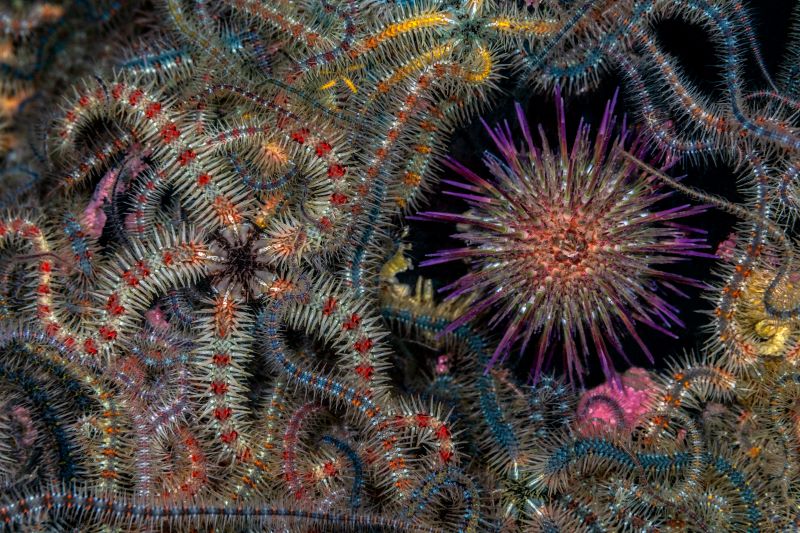
Photo: Jenny Stock
In the same contest, Portuguese photographer, Nuno Sá, was named ‘Save Our Seas
Foundation’ Marine Conservation Photographer of the Year 2024, with his photo ‘Saving
Goliath’, taken in Portugal. Sá’s photo shows beachgoers trying to save a stranded sperm
whale. The picture gives us hope that people do care and want to help the oceans, but also
warns us that bigger changes are needed. “The whale had been struck by a ship and its fate
was sealed,” explains Sá. “An estimated 20,000 whales are killed every year, and many more
injured, after being struck by ships-and few people even realise that it happens.”
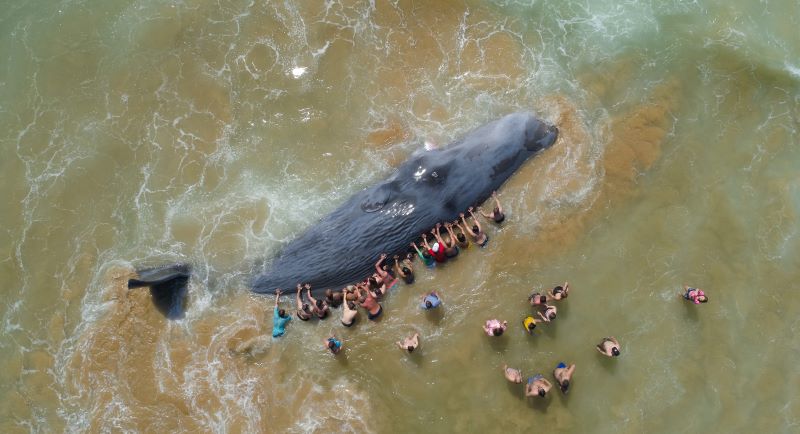
Photo: Nuno Sá
More winning images can be found at www.underwaterphotographeroftheyear.com.
About Underwater Photographer of the Year
Underwater Photographer of the Year is an annual competition, based in the UK, that celebrates photography beneath the surface of the ocean, lakes, rivers and even swimming pools, and attracts entries from all around the world. The contest has 13 categories, testing photographers with themes such as Macro, Wide Angle, Behaviour and Wreck photography, as well as four categories for photos taken specifically in British waters. The winners were announced in an award ceremony in Mayfair, London, hosted by The Crown Estate. This year’s UPY judges were experienced underwater photographers Peter Rowlands, Tobias Friedrich and Dr Alexander Mustard MBE.
Header image: Underwater Photographer of the Year 2024 winner Alex Dawson
News
World’s Best Underwater Photographers Unveil Breathtaking Images at World Shootout 2023
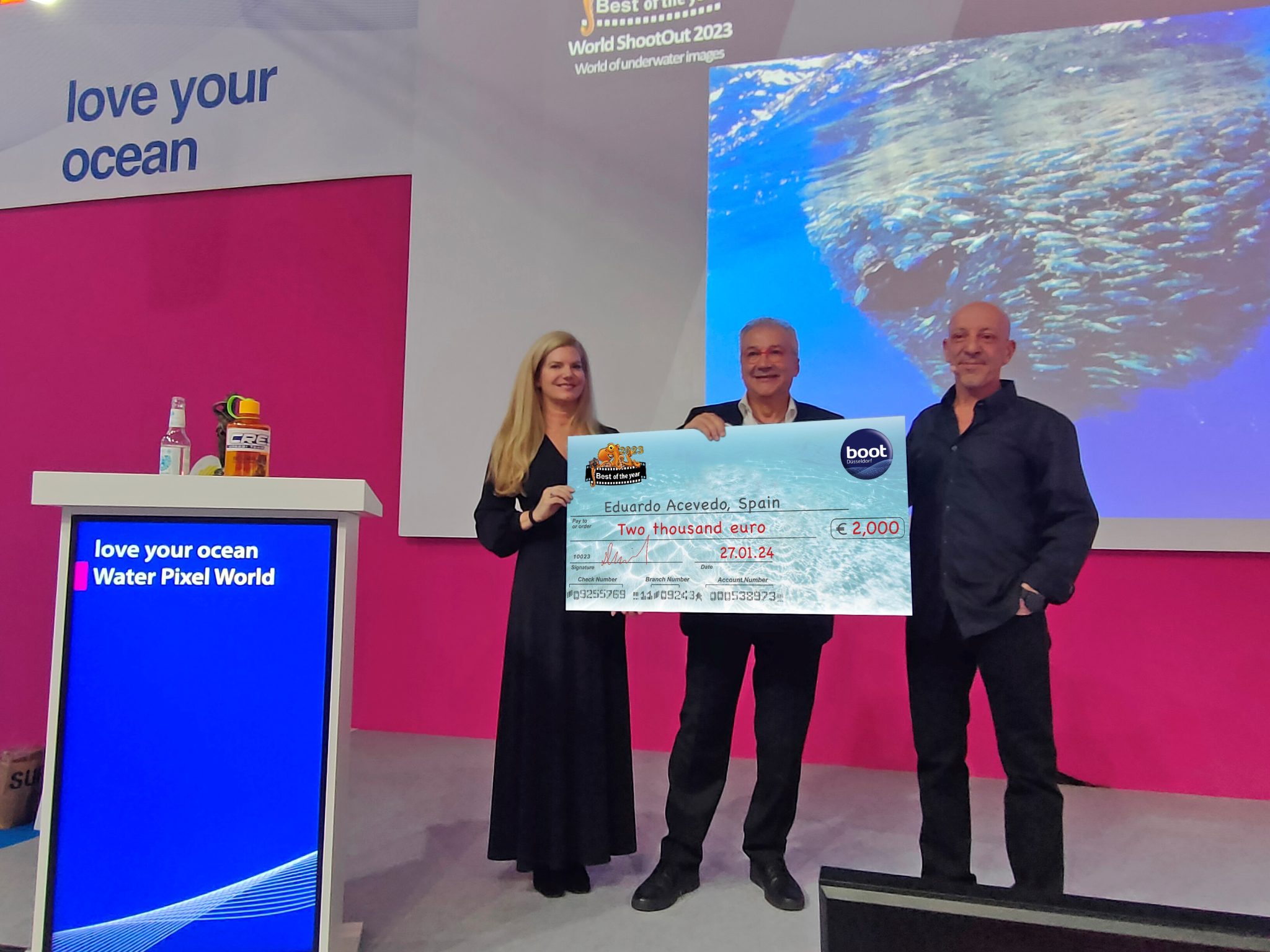
The winners of the prestigious World Shootout 2023 underwater photography competition were announced at this year’s BOOT Show, captivating audiences at the world’s largest diving and water sports exhibition in Dusseldorf, Germany. Hundreds of photographers from 54 countries competed across nine categories, pushing the boundaries of creativity and technical skill.
Grand Prize Winners
- Picture of the Year: Spanish photographer Eduardo Acevedo “secured” the top Honor with the prestigious prize the “boot Dusseldorf Director’s Prize, earning an Andromeda statuette and a €2,000 cash prize.
- Best 5 Images Portfolio: Luc Rooman from Belgium triumphed in this category, winning a dream 4-week diving trip for two to Papua New Guinea, valued at $18,900.
- Amateur Photographer: Alexandra Ceurvorst from the USA impressed the judges with her talent, taking home the 1,000 € cash prize award.
Celebrating Diversity and Innovation
This year’s competition saw 11,680 entries from 964 photographers, showcasing a remarkable spectrum of skills and perspectives. From the intricate wonders of Macro photography to the beauty of “Black Water”, the “Underwater Fashion” category added a touch of artistry and innovation, while the ever-important ” Environmental & Conservation” category served as a powerful reminder of the need to protect these fragile ecosystems.
Looking Ahead: AI and Ocean Conservation
World Shootout founder and producer David Pilosof unveiled an exciting addition for the 2024 competition: this year the Environmental category will be focusing on the impact of plastic on our oceans and future.
This category will embrace the potential of AI or other editing software as a tool to amplify the conservation message.
Entrants will submit campaigns of three original underwater photographs dealing with plastic pollution, along with their final AI assistance processing. This innovative approach encourages artistic expression while raising awareness about a critical environmental issue.
Explore the Stunning Collection
Discover the complete album of competition entries by clicking here.
For Low-resolution photos of finalist entries in eight categories, click here.
-
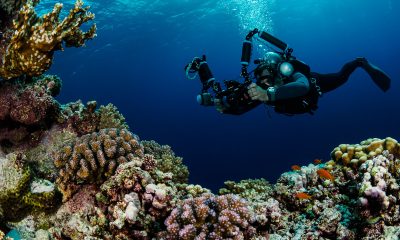
 News3 months ago
News3 months agoHone your underwater photography skills with Alphamarine Photography at Red Sea Diving Safari in March
-
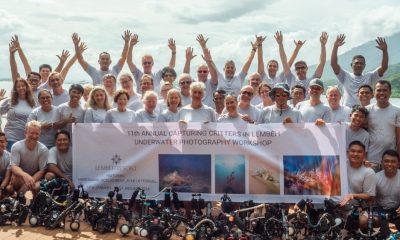
 News2 months ago
News2 months agoCapturing Critters in Lembeh Underwater Photography Workshop 2024: Event Roundup
-
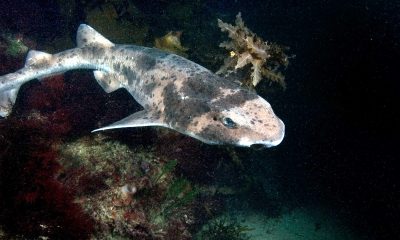
 Marine Life & Conservation Blogs2 months ago
Marine Life & Conservation Blogs2 months agoCreature Feature: Swell Sharks
-

 Blogs2 months ago
Blogs2 months agoMurex Resorts: Passport to Paradise!
-
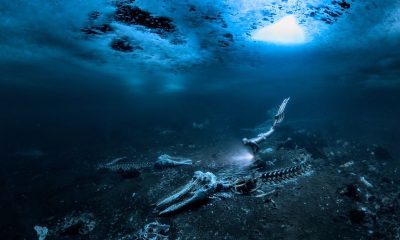
 Blogs2 months ago
Blogs2 months agoDiver Discovering Whale Skeletons Beneath Ice Judged World’s Best Underwater Photograph
-
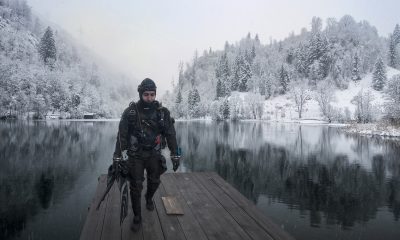
 Gear News3 months ago
Gear News3 months agoBare X-Mission Drysuit: Ideal for Both Technical and Recreational Divers
-
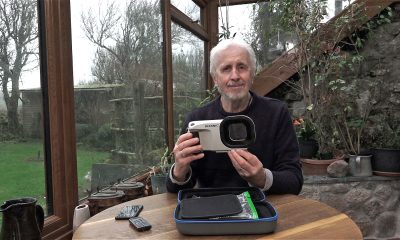
 Gear Reviews2 months ago
Gear Reviews2 months agoGear Review: Oceanic+ Dive Housing for iPhone
-
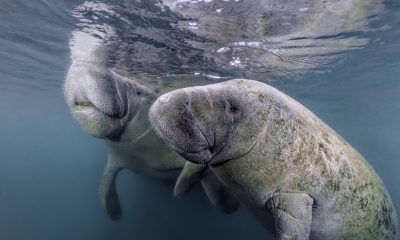
 Marine Life & Conservation2 months ago
Marine Life & Conservation2 months agoSave the Manatee Club launches brand new webcams at Silver Springs State Park, Florida


